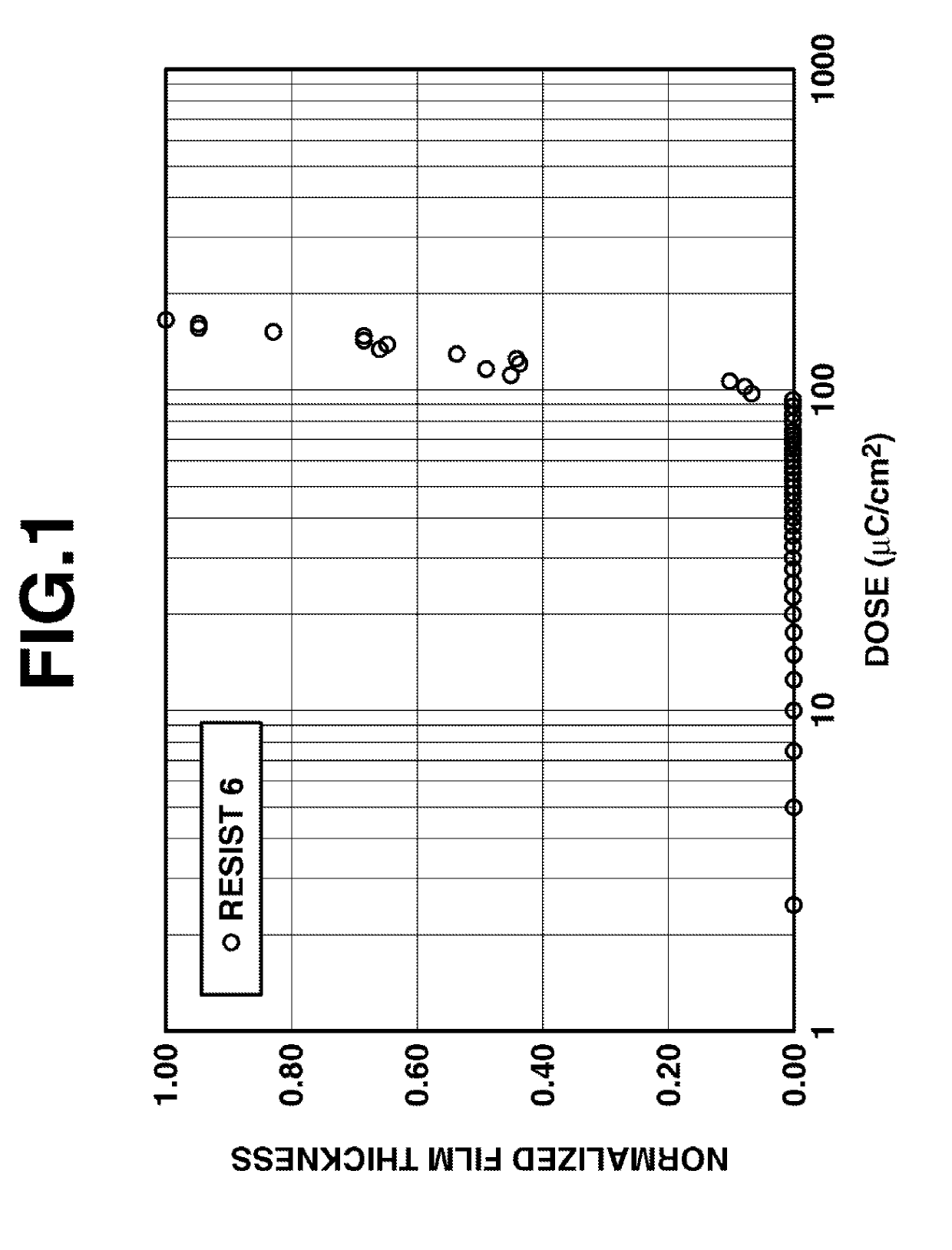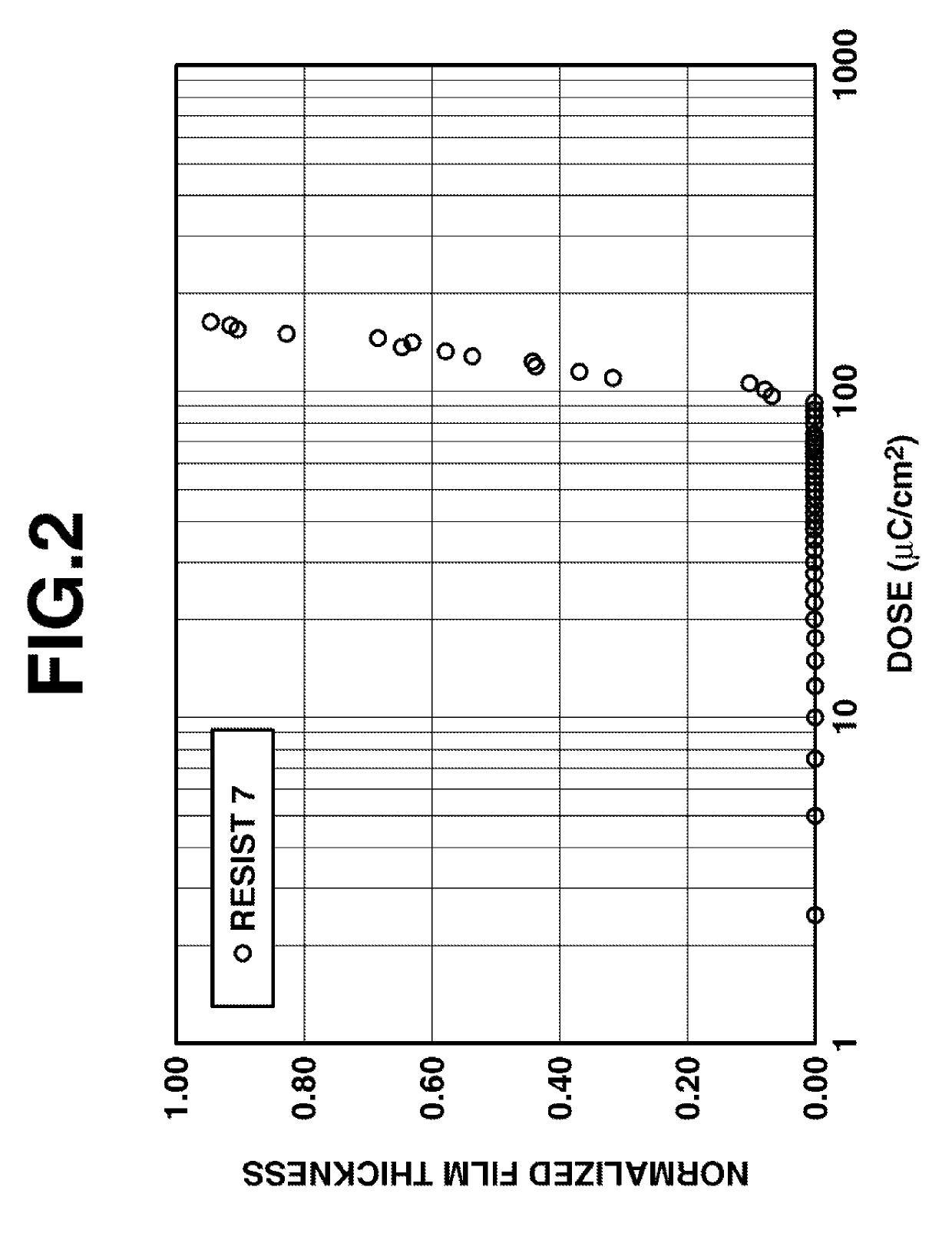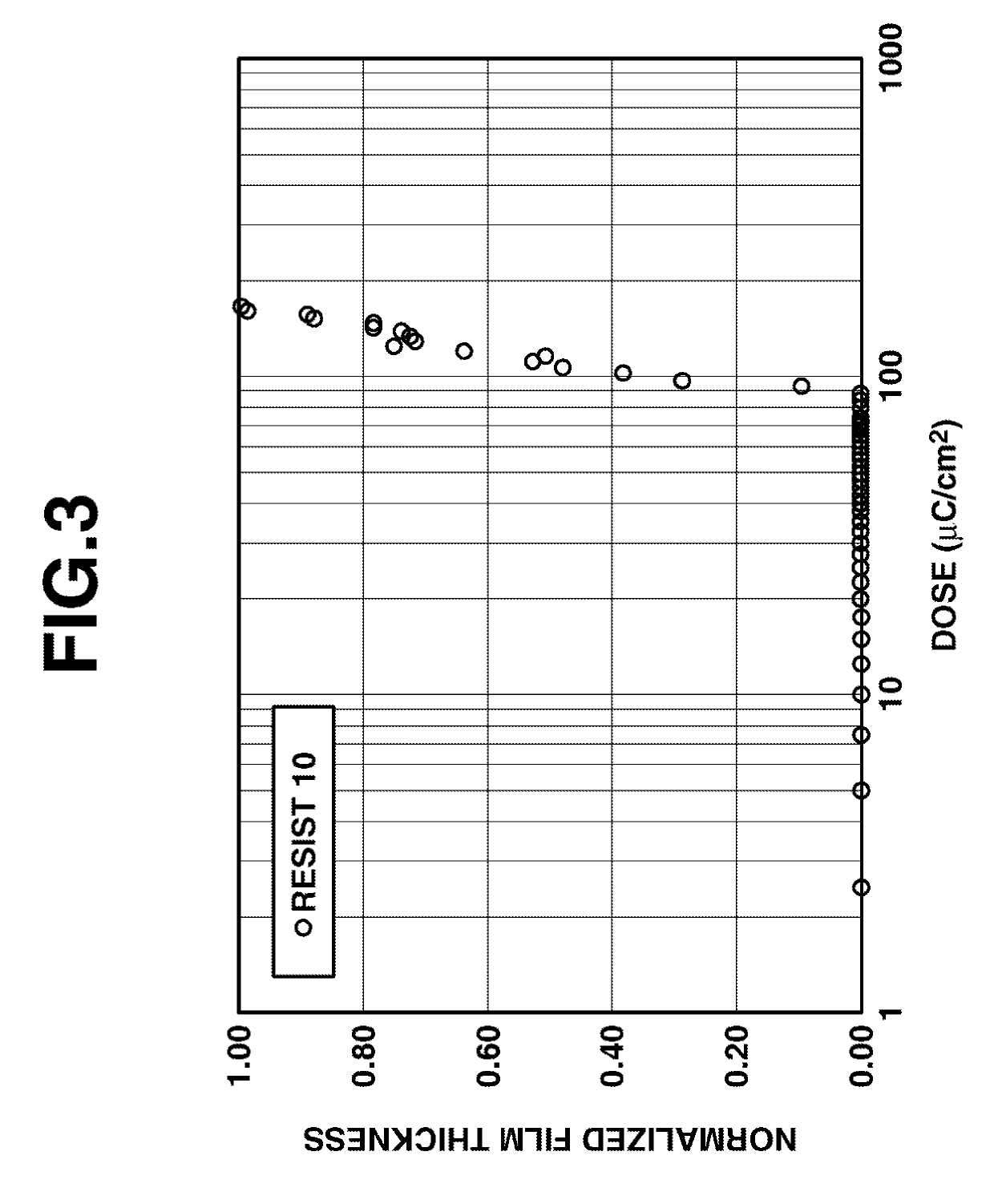Resist composition and patterning process
a composition and composition technology, applied in the field of resist composition and patterning process, can solve the problems of acid diffusion, poor etch resistance and substantial outgassing, image blur, etc., and achieve the effects of improving edge roughness, improving shelf stability, and high resolution
- Summary
- Abstract
- Description
- Claims
- Application Information
AI Technical Summary
Benefits of technology
Problems solved by technology
Method used
Image
Examples
synthesis example 1-1
[0136]To a solution of 284 g of titanium tetraisopropoxide (Tokyo Chemical Industry Co., Ltd.) in 500 g of 2-propanol (IPA), with stirring, a mixture of 27 g of deionized water and 500 g of IPA was added dropwise at room temperature over 2 hours. To the solution, 180 g of 2,4-dimethyl-2,4-octanediol was added, followed by stirring at room temperature for 30 minutes. The solution was concentrated in vacuum at 30° C. The concentrate was further heated to 60° C. and held at the temperature in vacuum until any distillate no longer came out. At the end of distillation, 1,200 g of 4-methyl-2-pentanol (MIBC) was added to the residue, which was heated at 40° C. in vacuum until IPA was no longer distilled out. There was obtained 1,000 g of a MIBC solution of titanium-containing compound A1 (concentration 25 wt %). The compound A1 had a Mw of 1,200.
synthesis example 1-2
[0137]To a solution of 284 g of titanium tetraisopropoxide (Tokyo Chemical Industry Co., Ltd.) in 500 g of IPA, with stirring, a mixture of 27 g of deionized water and 500 g of IPA was added dropwise at room temperature over 2 hours. To the solution, 120 g of 2-methyl-2,4-pentanediol was added, followed by stirring at room temperature for 30 minutes. The solution was concentrated in vacuum at 30° C. The concentrate was further heated to 60° C. and held at the temperature in vacuum until any distillate no longer came out. At the end of distillation, 1,200 g of MIBC was added to the residue, which was heated at 40° C. in vacuum until IPA was no longer distilled out. There was obtained 1,000 g of a MIBC solution of titanium-containing compound A2 (concentration 20 wt %). The compound A2 had a Mw of 1,100.
synthesis example 1-3
[0138]To a solution of 40 g of titanium tetrabutoxide tetramer (Tokyo Chemical Industry Co., Ltd.) in 10 g of 1-butanol (BuOH), 24 g of 2,4-dimethyl-2,4-hexanediol was added, followed by stirring at room temperature for 30 minutes. The solution was concentrated in vacuum at 50° C. The concentrate was further heated to 60° C. and held at the temperature in vacuum until any distillate no longer came out. At the end of distillation, 200 g of propylene glycol monomethyl ether acetate (PGMEA) was added to the residue, which was heated at 50° C. in vacuum until BuOH was no longer distilled out. There was obtained 160 g of a PGMEA solution of titanium-containing compound A3 (concentration 25 wt %). The compound A3 had a Mw of 1,000.
PUM
| Property | Measurement | Unit |
|---|---|---|
| EUV of wavelength | aaaaa | aaaaa |
| accelerating voltage | aaaaa | aaaaa |
| thickness | aaaaa | aaaaa |
Abstract
Description
Claims
Application Information
 Login to View More
Login to View More - R&D
- Intellectual Property
- Life Sciences
- Materials
- Tech Scout
- Unparalleled Data Quality
- Higher Quality Content
- 60% Fewer Hallucinations
Browse by: Latest US Patents, China's latest patents, Technical Efficacy Thesaurus, Application Domain, Technology Topic, Popular Technical Reports.
© 2025 PatSnap. All rights reserved.Legal|Privacy policy|Modern Slavery Act Transparency Statement|Sitemap|About US| Contact US: help@patsnap.com



